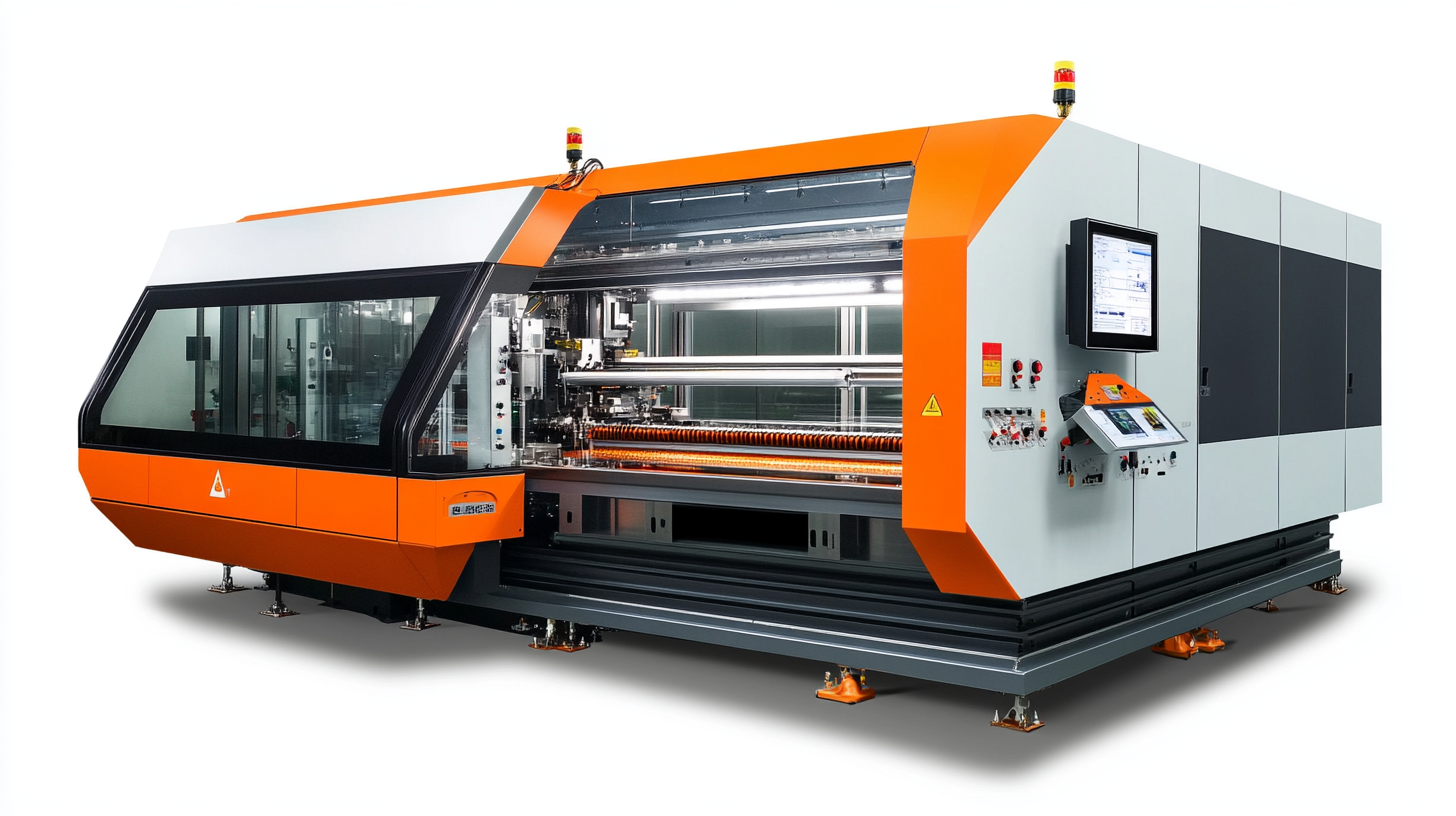Future Trends in Glass Cutter Machine Market 2025 and Best Practices for Businesses
As we look towards 2025, the glass cutter machine market is poised for significant transformation, driven by advancements in technology and evolving industry demands. In recent years, the glass cutting machinery sector has experienced a surge in innovation, with manufacturers focusing on enhancing precision, efficiency, and ease of use. From automated systems to software integrations, modern glass cutter machines are redefining the standards of performance and productivity. This dynamic landscape presents both challenges and opportunities for businesses operating in this field, urging them to adapt to emerging trends while adhering to best practices.
In this blog, we will explore the future trends projected for the glass cutter machine market by 2025 and discuss essential strategies that companies can implement to stay competitive. As the industry continues to evolve, understanding these trends will be crucial for business owners aiming to harness the full potential of cutting-edge technology. By adopting best practices, businesses can not only enhance their operational efficiency but also position themselves advantageously in a fast-changing market landscape. Join us as we delve into the key aspects shaping the future of glass cutter machines and how they will impact the industry as a whole.

Emerging Technologies Shaping the Glass Cutter Machine Market by 2025
The glass cutter machine market is poised for significant transformation by 2025, driven by emerging technologies that promise to enhance efficiency and precision. One of the most exciting advancements is the integration of automation and robotics into glass cutting processes. Automated machines equipped with AI-driven software can analyze cut patterns in real-time, optimizing performance and reducing material waste. This technological evolution not only increases output but also significantly cuts down on labor costs, making glass fabrication more competitive.
Another trend shaping the market is the growing adoption of laser cutting technology. Lasers offer unparalleled accuracy and can handle complex designs that traditional cutting methods may find challenging. As the demand for customized glass solutions rises across various industries, laser-cutting machines are becoming more prevalent. Their ability to deliver intricate designs without compromising quality positions them at the forefront of innovation in the glass cutter machine industry.
Additionally, the rise of Industry 4.0 introduces smart connectivity to glass cutter machines. These advanced machines can now be integrated into IoT ecosystems, allowing for real-time monitoring and predictive maintenance. Businesses can derive valuable insights from machine performance data, enabling them to streamline operations and enhance productivity. As these technologies converge, companies that embrace these advancements will not only lead in the glass cutter market but also set new benchmarks for efficiency and quality in manufacturing.

Key Market Drivers and Challenges for Businesses in the Glass Cutter Industry
The glass cutter machine market is experiencing significant evolution, driven by various factors that businesses must navigate to thrive. Key market drivers include the rising demand for energy-efficient cutting solutions and advancements in automation technology. According to a report by Research and Markets, the global glass cutting equipment market is projected to grow at a CAGR of 4.3%, reaching $2.1 billion by 2025. This growth is largely fueled by the increased utilization of glass in construction and automotive industries, which necessitates more sophisticated cutting tools that enhance precision and reduce waste.
However, businesses in the glass cutter industry also face several challenges. One major hurdle is the volatility of raw material prices, which can directly impact production costs and profit margins. A study from Technavio highlights that fluctuations in the cost of materials such as aluminum and steel may restrict market expansion, as manufacturers strive to balance quality with affordability. Additionally, the competition from low-cost manufacturers, particularly in emerging markets, poses a threat to established companies aiming to maintain market share.
To stay competitive, businesses must adopt best practices, such as investing in research and development to innovate cutting technologies and improve operational efficiencies. Training and skill development for employees are equally important to harness the full potential of advanced glass cutting machinery. By focusing on these key drivers and proactively addressing the inherent challenges, companies can position themselves strategically in the evolving landscape of the glass cutter machine market.

Best Practices for Implementing Glass Cutter Machines in Manufacturing
The implementation of glass cutter machines in manufacturing settings is increasingly becoming a strategic imperative for businesses looking to enhance productivity and precision. According to a recent report by MarketsandMarkets, the global glass processing market is projected to reach USD 48 billion by 2025, with a significant segment of this growth attributed to advancements in cutting technology. To remain competitive, manufacturers must adopt best practices in integrating these machines into their operations.
One of the most critical best practices is the selection of the right type of glass cutter machine that aligns with specific production needs. For instance, CNC (Computer Numerical Control) glass cutting machines have shown to improve accuracy by over 30% compared to manual methods, as noted by a study from Deloitte. Additionally, regular training sessions for operators can greatly enhance operational efficiency and reduce downtime, with data indicating a potential decrease in errors by approximately 25% when staff are well-trained.
Furthermore, preventive maintenance should play a key role in a manufacturer's operational strategy. According to a report by IBISWorld, organizations that engage in scheduled maintenance of equipment can increase their lifespan by up to 40%. Implementing a proactive maintenance schedule not only minimizes unexpected breakdowns but also ensures that the glass cutter machines perform at their optimal capacity, contributing to a more streamlined manufacturing process.

Sustainability Trends Influencing the Glass Cutter Machine Sector
Sustainability has become a pivotal factor across various industries, and the glass cutter machine sector is no exception. As environmental concerns gain traction, manufacturers and businesses are increasingly focusing on eco-friendly practices and technologies. The 2025 market outlook for glass cutter machines will undoubtedly be shaped by these sustainability trends, pushing companies to innovate towards greener alternatives.
One significant development is the shift towards energy-efficient machinery. New models are being designed to consume less power without compromising performance. This not only reduces operational costs but also aligns with the global push for reduced carbon footprints. Furthermore, industry leaders are now prioritizing materials that are recyclable and sustainable, ensuring that the production lifecycle of glass cutting machines has a minimal impact on the environment.
Additionally, companies are adopting smarter manufacturing processes that incorporate waste reduction and eco-conscious designs. Emphasizing a circular economy approach, manufacturers are striving to minimize waste generated during production and encourage the reuse and recycling of materials. These practices not only improve environmental outcomes but also resonate well with consumers who are increasingly making choices based on the sustainability credentials of the products they purchase.
By embracing these sustainability trends, businesses in the glass cutter machine market can not only meet regulatory demands but also gain a competitive edge. As environmental awareness continues to grow, this commitment to sustainability will be crucial in building brand reputation and customer loyalty, ultimately shaping the market's future landscape.
Future Market Opportunities: Niche Segments and Customer Preferences
As we look towards 2025, the glass cutter machine market is poised for significant transformation driven by evolving consumer preferences and emerging niche segments. Businesses aiming to capitalize on future opportunities must pay close attention to these trends. The impact of the pandemic has reshaped purchasing behaviors, with a notable shift towards online engagement and a heightened focus on product quality and functionality. Companies that adapt to these changes by offering user-friendly, innovative glass cutter solutions will likely resonate with a broader customer base.
In tandem with consumer demands, businesses should explore specialized market segments that present unique opportunities. For instance, there is an increasing interest in sustainability and eco-friendly practices within manufacturing processes. By integrating environmentally-friendly materials and technologies, companies can differentiate their products in a crowded marketplace. Furthermore, understanding regional preferences can help businesses tailor their offerings strategically, catering to local markets that may have specific needs or trends.
Data from recent market analyses underscores the importance of aligning product development with consumer expectations, which has become more critical post-pandemic. Those in the glass cutting industry should prioritize utilizing data-driven insights to gauge customer behavior and inform their product innovations. By embracing these best practices, businesses can position themselves to thrive in the competitive landscape of the glass cutter machine market by 2025 and beyond.

Home
About Us
Products
UPVC PVC Window Machine
Aluminum Window Machine
Glass Cutting Machine
Glass Edging Machine
Insulating Glass Machine
Glass lifting machine
Glass Washing Machine
Glass Laminating Machine
Glass Sandblasting Machine
Glass Drilling Machine
CNC Glass Working Center
CNC Non-Metal Cutting Machine
The Other Glass Machinery
Application
Download
News
Contact Us




